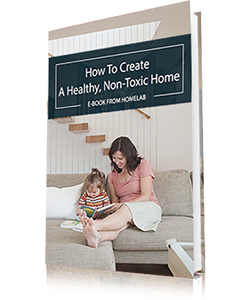
Chances are great that our daughters will pass on to our grandchildren some of the same chemical molecules they inherited from us. The estimated age by which a daughter will purge 99 percent of the inherited chemical varies depending on the chemical. It will take a day to excrete the phthalate plasticizers that soften up cosmetics, paint and plastics, but a year to dump mercury. Our daughters will be at least teenagers but perhaps senior citizens before they’re rid of the common flame retardants and stain-proofing chemicals we pass along. They would be 166 years old before they’re free of their inherited lead.

The EWG study, which was done on four mothers and their daughters, found that each of the eight women’s blood or urine was contaminated with an average of 35 consumer product ingredients, including flame retardants, plasticizers, and stain-proof coatings. These mixtures of compounds found in furniture, cosmetics, fabrics, and other consumer goods, have never been tested for safety.
The mothers and daughters in this study join 64 other people tested in six EWG biomonitoring programs conducted between 2000 and 2006. In total, EWG biomonitoring has found 455 different pollutants, pesticides, and industrial chemicals in the bodies or cord blood of 72 different people — including 10 newborn babies with an average of 200 chemicals in each child.
“EPA studies show that children from birth to age two are 10 times more sensitive to cancer-causing chemicals than adults,” said Jane Houlihan, EWG’s vice president for research. “Scientists have found that chemicals’ toxic effects can be passed down for four generations, by causing permanent genetic changes that can be inherited. A stew of toxic chemicals is not the legacy mothers want to hand down to their children.”
The findings were released a year ago this month at a briefing at the California State Capitol, but nothing has changed, either in terms of our exposure to these chemicals or the companies’ use of them. At the time, joining public health advocates and four of the mothers and daughters were Senate President Pro tem Don Perata, Sen. Deborah Ortiz and Assemblyman John Laird, authors and co-sponsor of SB 1379, a bill to establish the nation’s first state-level biomonitoring program to track pollution in people.
“We monitor the pollution in our air, our water, and even our fish. It’s time to start looking at the pollution in our bodies,” said Perata.
















